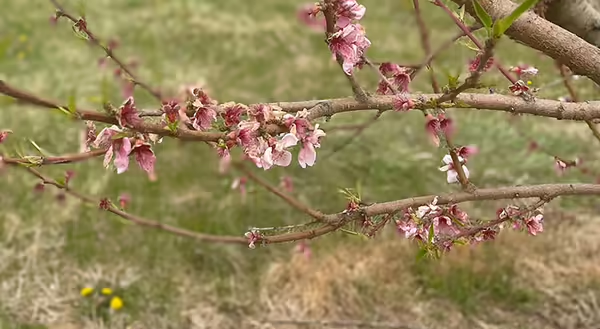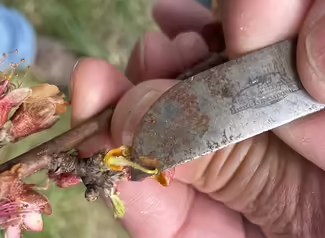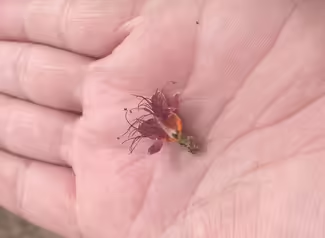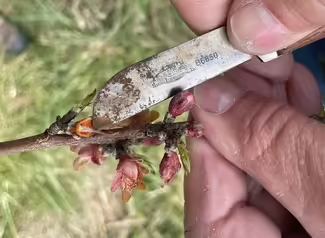
Our warm overall winter and above normal February temperatures signaled plants to break dormancy early, putting many of our crops, especially peaches, at risk of freeze damage. The potential for frost/freeze events from mid-March through mid to late April is typically high, putting peaches in advanced stages of bloom development at even greater risk of damage.
Differences in bud and bloom development can be seen within trees, just like differences between varieties, locations, and crops, providing a bit of resiliency to total crop loss during freeze events. Table 1 lists the stages of development for peaches and the critical temperatures that cause 10% and 90% kill. The further along in development, the more sensitive the blooms are to being damaged or killed.
Table 1. Critical temperatures at different stages of peach bud and bloom development
Peach Stage of Development 10% kill (°F) 90% kill (°F)
First swelling 18 1
Calyx green 21 5
Calyx red 23 9
First pink 25 15
First bloom 26 21
Full bloom 27 24
Post bloom 28 25
On the nights of March 18 and March 19 in southern Illinois, overnight temperatures were reported in the low to mid 20s with no cloud cover. Temperatures in the 5 days prior ranged from upper 60s to low 70s during the day and nighttime temperatures in the mid-40s. Many cultivars were in first pink to full bloom stages of development on most of the buds, putting a large portion of the crop at risk for loss. Based on temperatures and development leading up to the two nights of freezing temperatures, it was anticipated to find more than just a 10% kill, likely 75-80% kill.
In sampling an 18-inch branch from a ‘Cresthaven’ tree in Union Co., it was found that while many of the 20-25 blooms on the branch were in fact dead from the freeze, 4-6 flowers still had live, healthy ovary tissue. Only two fruits would need to completely develop on a branch of that length to reach a full load. Photos taken of the sampled branch show both dead and live ovary tissue as well as bud development from red calyx to full bloom, allowing for survivability of a crop from this freeze event. A continued concern is the likelihood of another freeze event occurring in the next month that could damage the remaining viable fruit on the trees. Growers should sample branches throughout their orchards to assess damage on various cultivars and make decisions on continued management practices based on the percentage of viable fruit tissue.



